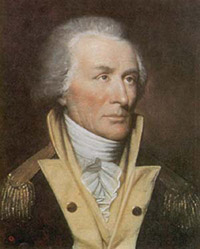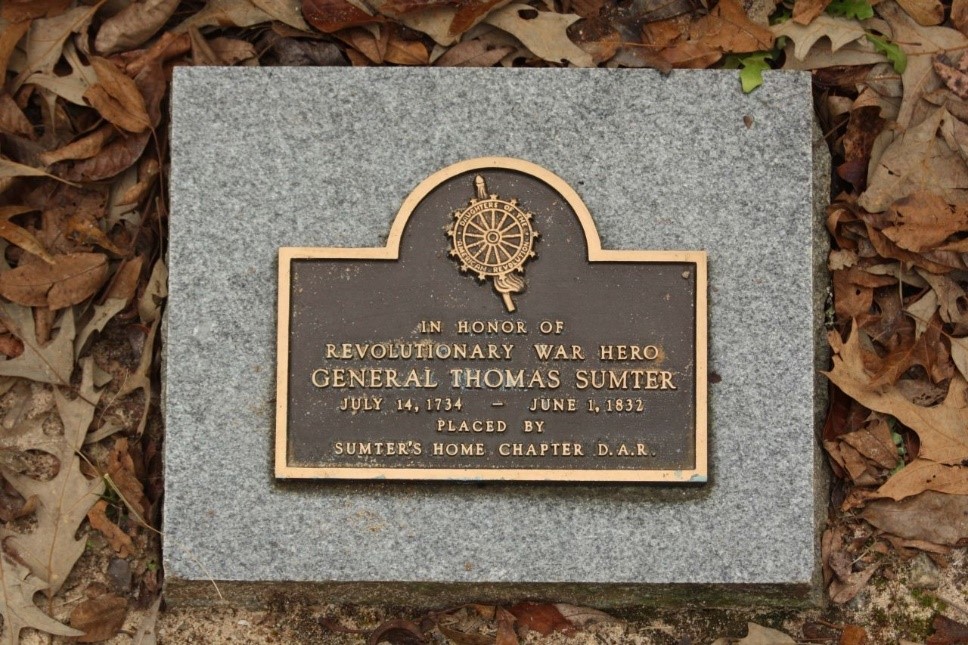He later joined the Virginia militia and served as a sergeant during the Cherokee War of 1760–1761. In 1762 he accompanied three Cherokee leaders, including Ostenaco, along with Lieutenant Henry Timberlake to London to meet with King George III.
During the Revolutionary War Sumter acquired the nickname “Carolina Gamecock” for his fierce fighting tactics. Cornwallis described him as his “greatest plague.” Sumter is credited with harassing the troops of Gen. Cornwallis to the point where Cornwallis turned north to Virginia and Yorktown where he ultimately surrendered. Thomas Sumter was the last surviving General of the Revolution dying at the age of 97 in 1832
After the United States gained independence Thomas Sumter was elected to the United States House of Representatives from 1789–1793 and 1797–1801 when he was elected to the United States Senate. He served from 1801 to 1810, when he retired to live on his plantation “South Mount” near Stateburg South Carolina, where he died on June 1, 1832. Brigadier General Thomas Sumter is buried at Thomas Sumter Memorial Park, Sumter County, South Carolina.
Fort Sumter in Charleston Harbor, planned after the War of 1812, was named in his honor. The shots initiating the American Civil War were fired at the Battle of Fort Sumter. Sumter Counties in Alabama, Florida, Georgia and South Carolina are named in his honor.
Thomas Sumter was one of the real-life historical inspirations for Mel Gibson’s character, Benjamin Martin, in the 2000 movie, “The Patriot.” Although a fictional story, the movie is based on the exploits of Thomas Sumter and several American patriots including the Francis Marion, also known as the “Swamp Fox,” Daniel Morgan, Elijah Clark and Andrew Pickens.



